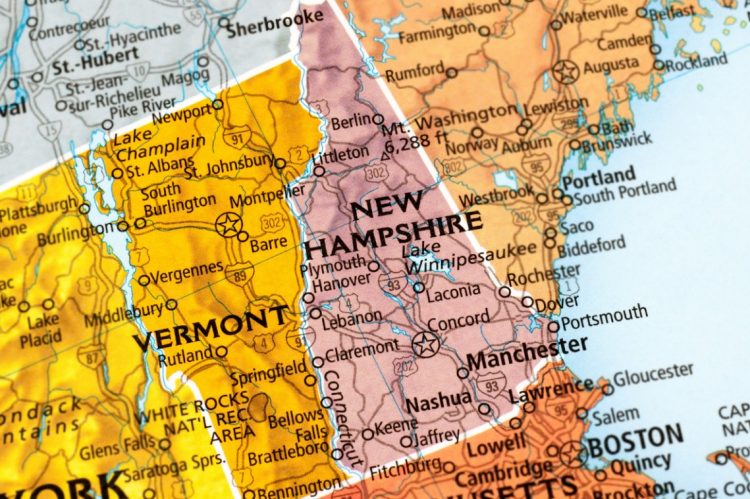What region of the country is seeing the most booming real estate market? While the South seems to be the obvious answer currently—with lower taxes and booming industries a natural draw to homebuyers—data suggests 17 out of 20 Sun Belt states are actually overvalued, a tell that a market at least isn’t cold.
Research by Harvard University’s Joint Center for Housing Studies tracked levels of domestic migration in all 50 states during 2023, but does the data support the conventional wisdom?
The South was indeed the region with the most consistent state-by-state spread of inward domestic migration. Mississippi and Louisiana were the only states that experienced net losses to domestic migration, with the remaining states experiencing significant influxes of domestic migration during 2023. Florida saw a staggering 194,000 net increase in domestic migration, while states like Georgia and Tennessee each gained about 60,000 people from domestic migration. Sparsely populated Western states (Idaho, Montana and South Dakota especially) also saw some of the highest domestic migration levels that year.
One of the most eye-catching trends is the lack of regional consistency across New England states. While Connecticut and Rhode Island both posted noticeable losses to domestic migration, Massachusetts lost a net of 39,000 people to domestic migration. Maine, New Hampshire and Vermont saw net gains in domestic migration—breaking down as follows:
- Maine (+9,216)
- New Hampshire (+4,298)
- Vermont (+844)
Anthony Lamacchia, CEO of Massachusetts-based Lamacchia Companies and broker/owner of Lamacchia Realty, tells RISMedia there’s a good reason for this: “It all has to do with pricing. People are just moving further away from Boston due to cost.”
The Missouri Economic Research and Information Center found that during the first quarter of 2024, New England as a whole was one of the least affordable regions of the country. Maine, the most affordable of the six, was ranked the 38th most affordable out of 50 states (plus the District of Columbia and Puerto Rico). Massachusetts was by far the least affordable in the region—ranked 49th out of 52.
Extrapolated from this data, the affordability of Northern New England appears relative; it is an attractive option for people who already live in the region. Not just for geographic reasons, but financial ones. Maine, New Hampshire and Vermont look like affordable alternatives to Massachusetts for people who could (at least until recently) afford to live in the Bay State in the first place. (Median household income in Massachusetts was about $95,000 in 2022, $20,000 higher than the national median at that time.)
For instance, New Hampshire is the only New England state with no state income tax, nor does it have a sales tax. Lower taxes are a natural draw for homeowners, i.e., people who have enough wealth to notice taxes chipping into it.
Ben Panunzio, a Lamacchia-affiliated REALTOR® who is licensed in Massachusetts, Maine and New Hampshire, spoke to RISMedia about this. A Massachusetts to New Hampshire migrant himself, Panunzio says his business has followed the flow of New England domestic migrants in recent years.
“At the beginning of my career, the bulk of my business was in Massachusetts. During the pandemic, it changed a bit. I got licensed in New Hampshire in 2021, and I followed a lot of business into New Hampshire, then 2022 came around. And so where pricing has gotten pretty outrageous in a lot of parts of the Northeast, particularly the Boston area since Covid, people got out of the city, out of Massachusetts into New Hampshire and then even got priced out of parts of Southern New Hampshire as well. So I became licensed in Maine in 2022…and so a lot of my business since 2022 has been in Maine and New Hampshire mostly.”
Gerry Bourgeois, senior advisor to the CEO and COO at Lamacchia Realty, spoke with RISMedia and offered his take on how New England real estate markets are performing compared to each other.
“From the brokerage standpoint, we’re seeing some very good growth in New Hampshire,” said Bourgeois. “We just opened up an office in Salem, New Hampshire, I think it was last year, roughly about a year or so ago. And we already had a very good presence in New Hampshire prior to that. But now with the opening of our Salem office, that’s increased even more.”
Bourgeois, concurring that affordability drives many Massachusetts residents into becoming domestic migrants, pointed to data showing that 25% of New Hampshire’s population was born in Massachusetts. Bourgeois described the features of Massachusetts as a double-edged sword; it’s expensive because it’s a desirable place to live.
“When you factor (local affordability) along with increased mortgage rates and what have you, it’s been challenging for some people,” he says. “Then you add inflation and all other insurance and taxes and other costs, it’s making people consider whether they’re going to stay here or not. On the flip side though, you have to remember Massachusetts—we’ve got a global city in Boston, and it’s a coastal state, so a lot of…trade as well as vacations and that sort of thing. We’ve got world-class professional sports teams. We’ve got literally the best hospitals, healthcare hospitals, in the country, if not the world. Same thing with universities, colleges. There’s a lot to be had here, and that’s why a lot of people come here. And that’s why, as a result, we have all the good stuff that we have here that does increase demand, which has increased the cost of housing. But at a certain point, not everybody’s a brain surgeon at Mass General.”
New Hampshire, owing to its similar climate, leaner tax structures and proximity to the amenities of Massachusetts, has historically made it a go-to destination for Massachusetts expats.
“You’re trading distance essentially, or you’re trading convenience for the cost basically. However, depending if you’re on the Southern New Hampshire border, you’re as close to Boston, if not closer than some places even in central Mass., depending on where you are. So the convenience still depends on where you’re located. You go to Northern New Hampshire, it’s obviously a different story. But if you’re sitting somewhere in Salem, New Hampshire, you can be down in Boston quicker than probably I could be from Leominster.”
Panunzio noted a similar delineation between the northern and southern regions of the states (calling Portsmouth, New Hampshire, “basically the second Boston”) but said some buyers see the remoteness of Northern New England as a feature.
“The area is beautiful in New Hampshire and Maine. There’s access to mountains and access to lakes, but also, we’re only a half hour, 45 minutes from the beach, the sea coast. So you’re going to get a lot of buyers who are looking to kind of expand. And I always say, call it elbow room, but you want to get away from your neighbors a little bit, but still be in civilization. I’m not necessarily seeing people move way up into these remote areas, just more residential areas that have some amenities, but more elbow room than you would in a city.”
Asked if he was concerned about the trends of Massachusetts’ population, Bourgeois mostly brushed it off. “We’re losing domestic population, but (actual) population is increasing. And you’ve got to remember, Massachusetts is the 16 most populated state in the country. We’ve got 7 million residents. So you lose 39,000, you still get 7 million. It’s not like it’s a total catastrophe.”
Panunzio, who attributes movers “vacating Massachusetts” in part to remote work, also feels these trends need time to play out.
“Remote (work) is something that we saw a lot, too, which is also kind of changing again where the economy is changing and employers are starting to call people back into the offices. So I’d be curious to see how that kind of affects people maybe moving back from being remote work for the last few years,” he says.













I wish you would stick to facts affecting our business without your biased political views !!! Politics doesn’t need to be in our industry. Inflation, interest rates, crime , opioid epidemic Border crisis and on and on it goes. Those are important factors affecting our industry and all Americans.